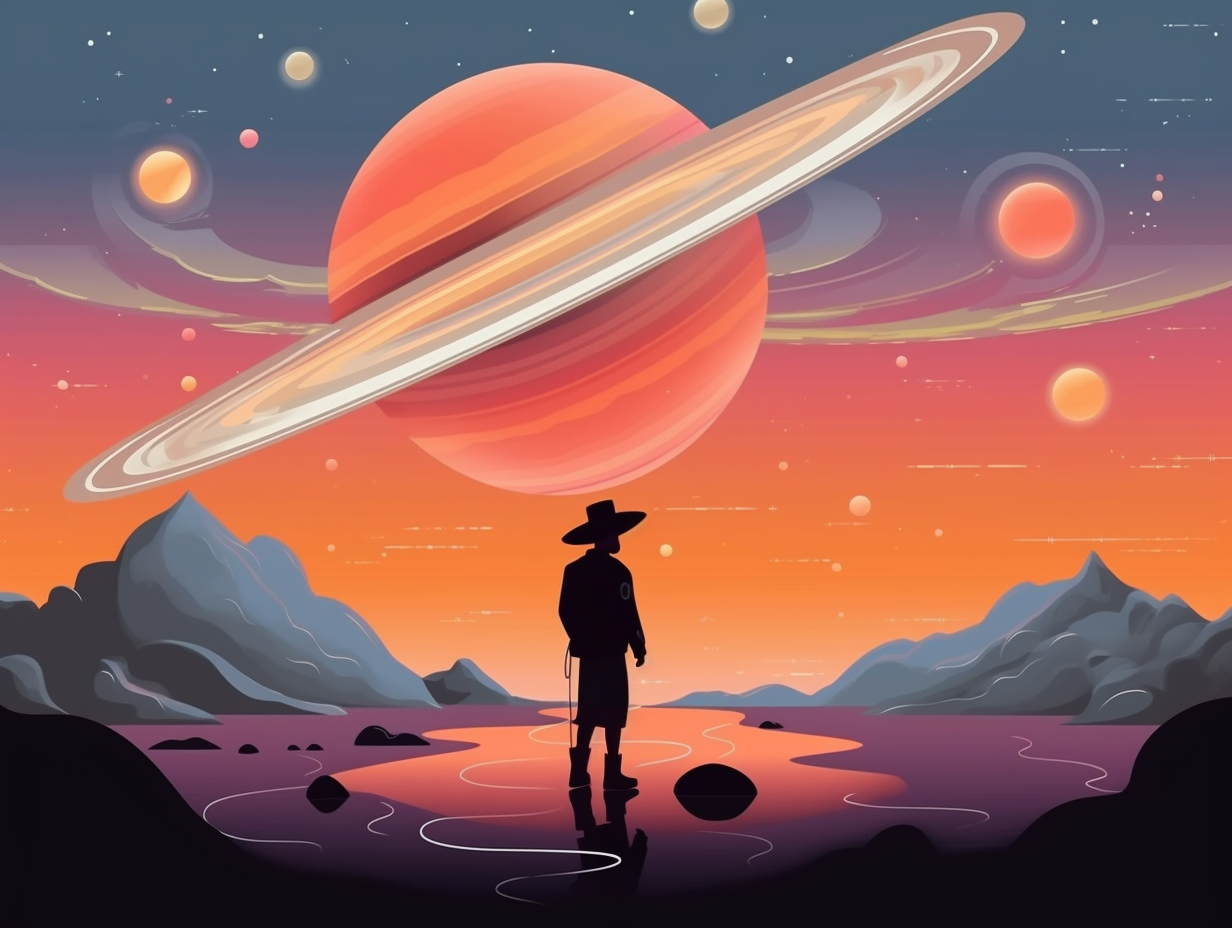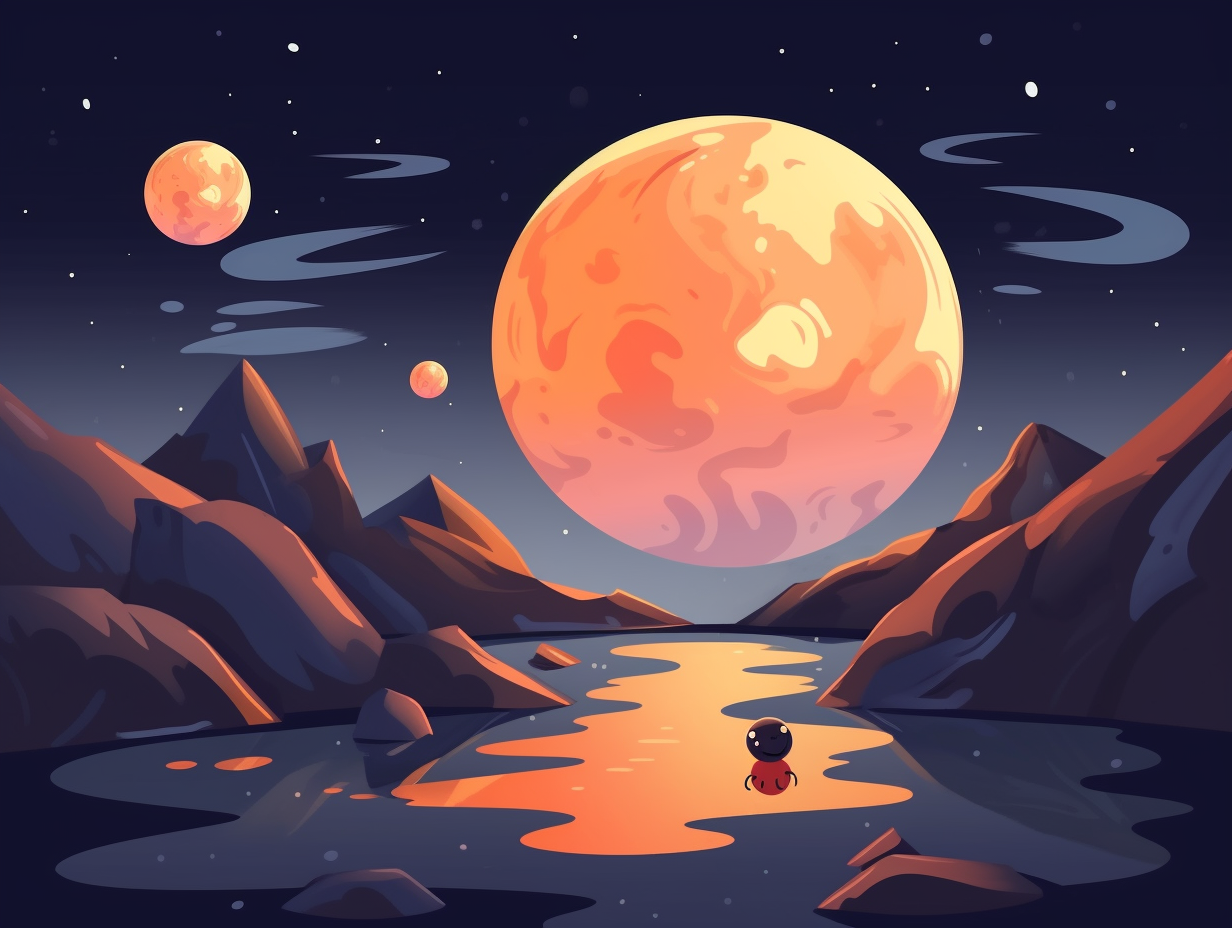30 Amazing Earth Fun Facts That Will Blow Your Mind: Discover Our Planet's Secrets

1. Shape-Shifting Earth
If Earth were a contestant on a reality TV show, it would be accused of lying about its shape for attention: The Earth is actually an oblate spheroid, bulging at the middle due to its rotation, creating a 42-kilometer difference between its diameter at the equator and poles. To measure accurately, one must choose their datums wisely — NAD27, WGS84, or NAD83 — lest they face inaccuracies of over 100 meters.
Source => gsp.humboldt.edu
2. Cosmic Drag Racing
Gather 'round, speed demons and cosmic cruisers: it's time for a planetary joyride that'll leave even the fastest cars on Earth in the dust! Rev up your engines and put the pedal to the metal as we gear up for some gravity-defying facts! Ready, set, go: Earth is whizzing through space at 67,000 miles per hour as it orbits the sun, while our entire solar system spins around the Milky Way at a mind-boggling 490,000 miles per hour – talk about cosmic drag racing!
Source => scientificamerican.com

Did you know that bread crumbs are a major threat in space? Discover how tortillas save the day on the ISS and learn about astronauts' unique taste bud adventures!
=> Fun Facts about Space
3. Weight Loss at the Equator
Looking for a gravity-defying weight loss program? Skip the gym and head for the equator! Guaranteed results in weight reduction—or your latitudinal relocation fees back: Earth's rotation causes a bulge at the equator, making you farther from the center and experiencing slightly less gravity than at the poles. On average, you'll weigh about 1% less at the equator than at the poles, shedding a few precious pounds for your next beach vacation.
Source => wtamu.edu
4. Magnetic North Pole Tag Team
Imagine if Captain Jack Sparrow had to change the course of the Black Pearl because his beloved compass went haywire: Turns out, the Earth's magnetic north pole, which affects compasses, isn't fixed and sometimes aligns with the true north pole. In fact, it recently matched up for the first time in 360 years at Greenwich, UK, causing magnetic compasses to point directly at the geographic north pole. But don't count on this magnetic tag-team for long, as it's expected to shift westward due to Earth's ever-changing magnetic field!
Source => phys.org

5. Mountain-Making Dance Floor
When continents play "bump and grind" on the Earth's dance floor, majestic mountains are born: The Himalayas, an awe-inspiring result of the Indian and Asian continents bumping booties, boast incredible heights with over 30 peaks exceeding 7,300 meters (24,000 feet), all whilst continuing to grow due to the ever-shifting tectonic plates that keep the world grooving.
Source => education.nationalgeographic.org
6. Earth's Kim Kardashian Waistline
You might say Earth is fashionably chubby, elegantly bulging at the waistline, just like a celestial Kim Kardashian: In reality, our beloved planet is an oblate spheroid, with a diameter of 12,713.6 km from pole to pole and 12,756.2 km across the equator, making a difference of approximately 42.6 kilometers thanks to the spin-induced centrifugal force.
Source => discovermagazine.com
7. Poseidon's Early Earth
Before Poseidon got his land legs, Earth was one big splash zone: Scientists have discovered evidence suggesting that 3.2 billion years ago, our planet was entirely covered in water, with continents emerging later due to plate tectonics.
Source => livescience.com
8. Snowball Earth Nightmare
Once upon a frosty nightmare, Earth flipped the "I need personal space" mode to the extreme: About 650 million years ago, our planet became a giant snowball, with its icy grasp stretching as far as 10 degrees from the equator, according to the Snowball Earth hypothesis. While some ponder over the idea of a popsicle Earth, others challenge the likelihood of a completely frozen ocean. Brace yourselves, it's a cold case waiting to be cracked!
Source => en.wikipedia.org
9. Pacific Ocean: Poseidon's Pool
If Poseidon had an Olympic-sized swimming pool, it would surely be the Pacific Ocean: The largest body of water on Earth, covering over 30% of our planet's surface and boasting the Challenger Deep in the Mariana Trench, the deepest point known in the ocean, at an impressive 36,000 feet.
Source => abc.net.au

10. Daylight Meal Portions
If the Earth were a restaurant, daylight would certainly be the special of the day with varying portion sizes depending on your table reservation: At the equator, you'll get a steady 12-hour platter of sunlight all year round, while areas closer to the poles experience more dramatic shifts, from the sun never setting during summer months in places like Barrow, Alaska, to the North Pole's half-year-long party of "polar day" where it's lights out only after the autumnal equinox.
Source => weather.gov
11. Antarctic Ice Sheet Meltdown
If the Antarctic Ice Sheet had an epic meltdown, it wouldn't be from binge-watching sad movies or listening to breakup playlists: it'd be responsible for raising sea levels up by roughly 60 meters (200 feet), drastically altering weather patterns, and potentially causing even more ice to melt as a result of "blocking events" from the Greenland Ice Sheet. So, while Antarctica holds only 2% of the world's water supply, a whopping 70% of our fresh water remains sealed within its icy grip.
Source => discovery.com
12. Earth's Sulfur Sweetie Core
Who knew Earth's core had commitment issues with gravity? It kept it sulfur, sweetie: 90% of the Earth's sulfur resides in its core, which helped geoscientists solve the weight discrepancy between the iron and nickel core constituents and the actual core mass, leading to a better understanding of planetary differentiation.
Source => nationalgeographic.org
13. Meteorite Gold Delivery
Whoever said "money doesn't grow on trees" clearly wasn't thinking about meteorites: Turns out, Earth's crust's gold supply was largely brought by generous space rocks! Without them, gold would be even scarcer, as 1.6 quadrillion tons of it lie trapped in our planet's core, alongside six times as much platinum, yet gold remains the reigning metallic heartthrob.
Source => discovermagazine.com
14. Wobbly Earth Days
Ever feel like there just aren't enough hours in the day to binge-watch your favorite series or indulge that ice cream craving? You're not alone – it turns out Mother Earth likes to keep us on our toes (and occasionally throws us an extra second for good measure): Scientists have discovered that the length of a day on our planet wobbles due to factors such as tides, earthquakes, climate, and even the movement of Earth's mantle! As if 2020 wasn't twisty enough, days have been getting mysteriously longer again, leaving scientists baffled and those GPS systems working overtime to keep up.
Source => economictimes.indiatimes.com

15. Russian Galapagos: Lake Baikal
Move over, Darwin! There's a new Galapagos in town – well, in Russia, to be precise: Lake Baikal, the world's oldest and deepest freshwater lake, is home to a unique and diverse array of endemic flora and fauna, earning it the title "Galapagos of Russia", while boasting 25 million years of history and harboring an impressive 20% of the globe's unfrozen freshwater reserve.
Source => whc.unesco.org
16. Earth's Anti-Wrinkle Stromatolites
Move over, Benjamin Button: Earth's been aging backward with its very own anti-wrinkle stromatolite cream! Discovered in Greenland, these fossilized microbial mats go back 3.7 billion years, making them nearly 300 million years older than the previous fossil record holder, and may assist scientists in developing techniques for finding life not just on Earth, but on other planets too.
Source => science.org
17. Mawsynram: World's Wettest Battle
In the great battle of raindrops and teardrops, Mawsynram plays a Titanic game of "Who'll stop the rain?": Though often touted as Earth's wettest locale, Mawsynram, India actually has soaked-up rivals like Lloró and López de Micay in Colombia, boasting higher average yearly rainfalls. Yet, Mawsynram still outpours as the reigning champ of most drenched in a single day – on June 17, 2022, it showered the world with a staggering 1003.6 millimeters of rain, as verified by the Indian Meteorological Department.
Source => en.wikipedia.org
18. Sky-High Altiplano Soiree
Get ready to put your party hats on and celebrate the Largest Soiree in the Sky: The Altiplano, nestled between the eastern and western ranges of the Andes Mountains, is Earth's grandest high plateau outside of Tibet, extending across southern Peru, northern Chile, and Argentina. Reaching an impressive base elevation of 12,500 feet, this Dalí-esque playground flaunts impossible landscapes, strutting flamingos, soothing hot springs, and deserts so parched, they haven't seen a single raindrop in over 500 years.
Source => sevencorners.com
19. Growing Tectonic Plate Veggies
Who knew mountains could have growth spurts too? It seems the Himalayas have been gulping down their tectonic-plate veggies: The range grows at a rate of approximately 2.4 inches per year due to the collision of the Eurasian and Indian tectonic plates, making them one of the fastest-growing mountain ranges on Earth!
Source => homework.study.com
20. Lightning Empire Strikes
Forsooth, dear reader, it appears that Mother Nature is quite the decisive drama queen, insisting on endless encores from her shockingly stellar performances: Lightning can indeed strike the same place multiple times, with the Empire State Building in New York City receiving the electrifying honor approximately 23 times per year.
Source => weatherandradar.ie
21. Caffeine Binge Space Sloth Earth
Next time you take a leisurely cosmic stroll or plan an adventurous galactic road trip, be forewarned: our humble Earth doesn't hold back on breaking speed limits, zipping through space like a hyped up space sloth on a caffeine binge: Orbiting around the Sun at an exhilarating 67,000 miles per hour, while simultaneously whirling around the Milky Way at a staggering 140 miles per second and dashing towards the Virgo Cluster at a whopping 375 miles per second, our beautiful blue marble makes its way in the infinite vastness with surprisingly impressive speed!
Source => stardate.org
22. Earth's Nightclub Bouncer Core
If Earth were a nightclub, it would be the most exclusive and densely packed party in the solar system, with a bouncer so strict it uses gravitational force to keep the core's size in check: The Earth, our beloved home, boasts the densest identity among our planetary neighbors due to its highly compressed core, which experiences a whopping 3,600,000 times the pressure at sea level, proving that its density - unlike a nightclub's - has nothing to do with its teeming population of over 7.8 billion people.
Source => bigthink.com
23. Atmospheric Onion Layers
Hold on to your hats and monocles, good sirs and madams, for I am about to unravel the enigmatic layers of Earth's atmospheric onion that make life an unparalleled spectacle: The Earth's atmosphere boasts five distinct layers - the troposphere, stratosphere, mesosphere, thermosphere, and exosphere - each playing a unique role in shielding us from cosmic radiation, providing fodder for shooting stars, and housing all the cloud creatures that bequeath us with both sunshine and rain.
Source => education.nationalgeographic.org
24. Giant Earth Water Balloon
Imagine living in a world where we could all swim in a giant water balloon! Well, you might need some serious goggles and flippers for this one: If all the Earth's water were to be contained in a sphere, it would have a diameter of approximately 860 miles, encapsulating a whopping 332.5 million cubic miles or 1,386 million cubic kilometers of H₂O!
Source => usgs.gov
25. Grand Canyon Carving
Who knew the Earth is a fan of fine sculpting? Mother Nature turned the Colorado River into her personal chisel, carving out the Grand Canyon like a master sculptor at work: In a slow process known as downcutting, the powerful Colorado River eroded away at the layers of rock over five to six million years, breathing life into the colossal Grand Canyon, despite the canyon's rocks being much older, with the ancient 1.8-billion-year-old rocks at the base contrasting the relatively young 270-million-year-old Kaibab Formation bedrock at the top.
Source => nps.gov
26. Tidal Moon Dance
You know what they say: "Sun's out, tides in!" But hold on a second, because even though the sun's whopping 27 million times heavier than the moon, it's also way farther out – 390 times the distance, to be precise. So, it’s our trusty little moon that really knows how to make waves: The moon is the dominant force affecting Earth's tides, exerting a gravitational pull that's about twice as strong as the sun's.
Source => oceanservice.noaa.gov
27. Inner Core Under Pressure
Talk about a tight squeeze! The Earth's inner core has cozied up under so much pressure, it could make the most seasoned pressure-cooker blush: With a whopping 330 gigapascals under its belt, the inner core is bearing the weight of 3.3 million times the pressure of our atmosphere at sea level, keeping it solid as a rock despite sizzling temperatures.
Source => scienceline.ucsb.edu
28. Earth Kitchen Spices
Who knew Earth's kitchen could be so unstable: ever heard of continental cook-offs? Well, here's the deal. The Earth's internal 'Chef Ramsay' whips up spicy, tectonic troubles as a result of heat shenanigans in the layers beneath! This sizzling heat causes plate movements, which can pave the way for earthquakes and explosive eruptions, deftly sculpting our landscape while keeping the world on its toes. So, yes, folks, it's all about knowing the ingredients and how they blend within the crust, mantle, outer core, and inner core: because this Earth-Bake Recipe is ripe for some fiery action!
Source => nationalgeographic.org
29. Party on Mauna Kea
If Mauna Kea were a star-studded Hollywood party, it would be way above sea-level, requiring an exclusive RSVP of global permits: the lofty Hawaiian volcano is not only the tallest mountain in the state but also houses one of the world's most significant astronomical observatories with 13 high-tech red carpet venues for stargazers, all atop its air-clear, dry summit.
Source => usgs.gov
30. Teletubbies' Sunshine Rival: Yuma
Who says that sunshine is only found on the Teletubbies' green hills? Yuma, Arizona begs to differ: this sun-baked city holds the world record for the most number of sunny days per year with 175 full-blown sunshine days, boasting an impressive 91% of annual daylight hours and up to 13 hours of sunlight in summer and 11 in winter, as confirmed by the World Record Academy and Visit Arizona reports.
Source => worldrecordacademy.org
Related Fun Facts




















